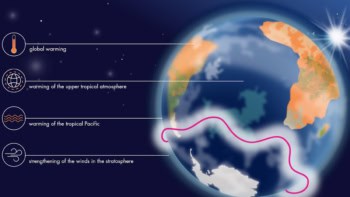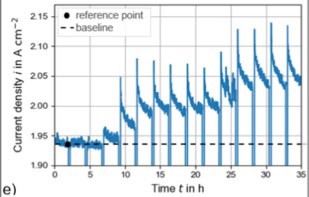As carbon dioxide concentrations rise, the Amazon rainforest is likely to become drier whilst woodlands in Africa and Indonesia become wetter. That’s at least partly due to the direct response of vegetation to higher levels of the gas, according to a new study.

“People tend to think that most of the disruption will come from heat going into the oceans, which, in turn, will alter wind patterns,” said James Randerson of the University of California, Irvine, US. “We have found that large-scale changes in rainfall can, in part, be attributed to the way tropical forests respond to the overabundance of carbon dioxide humans are emitting into the atmosphere, particularly over dense forests in the Amazon and across Asia.”
Small pores known as stomata on the underside of tree leaves open to take in carbon dioxide for photosynthesis and emit water vapour in a process known as transpiration. If there’s more carbon dioxide in the atmosphere, the stomata open less widely, reducing the amount of water evaporated into the air. When multiplied across the rainforest, this process can affect winds and the flow of moisture from the ocean.
“In many tropical forest regions, the moisture supplied by transpiration, which connects water underground at the root level directly to the atmosphere as it is pulled up to the leaves, can contribute as much as moisture evaporated from the ocean that rains back down at a given location – which is normal rainforest recycling,” said Gabriel Kooperman, who’s now at the University of Georgia, US.
With higher carbon dioxide concentrations, however, forests evaporate less moisture into the air and fewer clouds are likely to form above the Amazon. “Rather than [joining with the usually abundant clouds and] raining over the forest, water vapour from the Atlantic Ocean blows across the South American continent to the Andes mountain range, where it comes down as rain on the mountain slopes, with limited benefit to the rainforest in the Amazon basin,” Kooperman said.
The forests in Central Africa and the Maritime Continent, an area between the Pacific and Indian oceans that includes Malaysia, Papua New Guinea and the Indonesian archipelago, are predicted increased rainfall, on the other hand.
On islands such as Borneo, Java and Sumatra, which are surrounded by humid air above warm ocean surfaces, the reduction in evaporation is projected to lead to warming over the forests.
“You’ll get a stronger contrast in heating over the islands compared to the nearby ocean, and so it will enhance a natural ocean-land breeze, pulling in more moisture from these neighbouring ocean systems to increase rainfall over the forests,” said Randerson.
The team’s results, published in Nature Climate Change, indicate that the response of tropical vegetation to higher carbon dioxide can be an important driver of climate change in the tropics.
According to Kooperman, the resulting droughts and forest mortality in the Amazon and a potential increase in flooding in other rainforests may have an impact on biodiversity, freshwater availability and food supplies for economically vulnerable populations.



